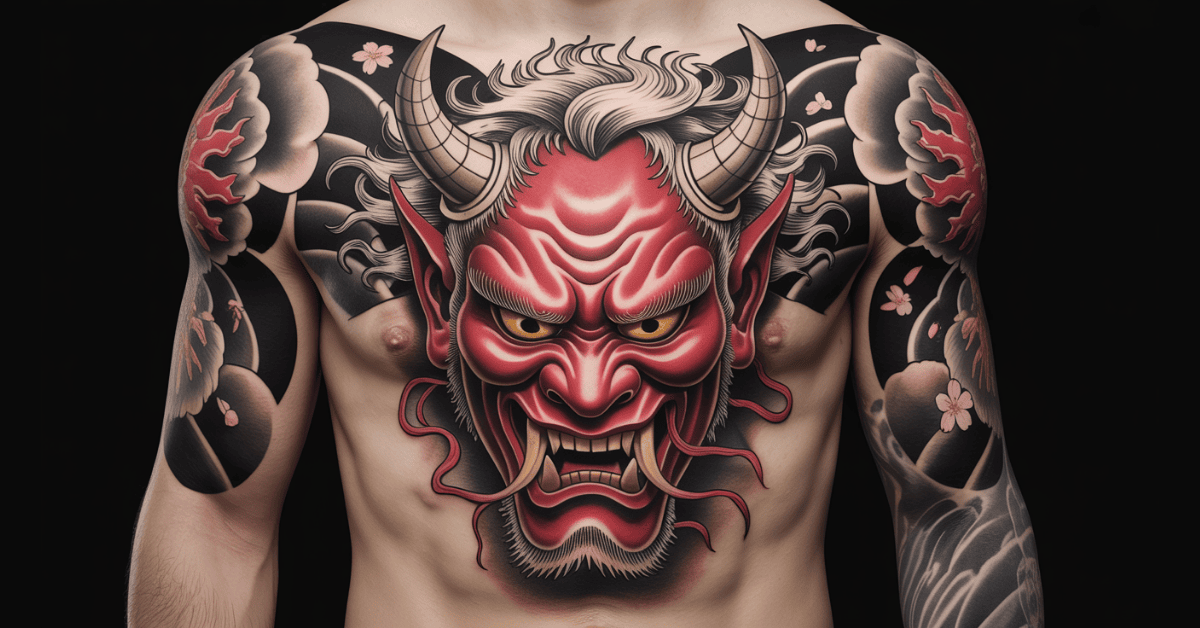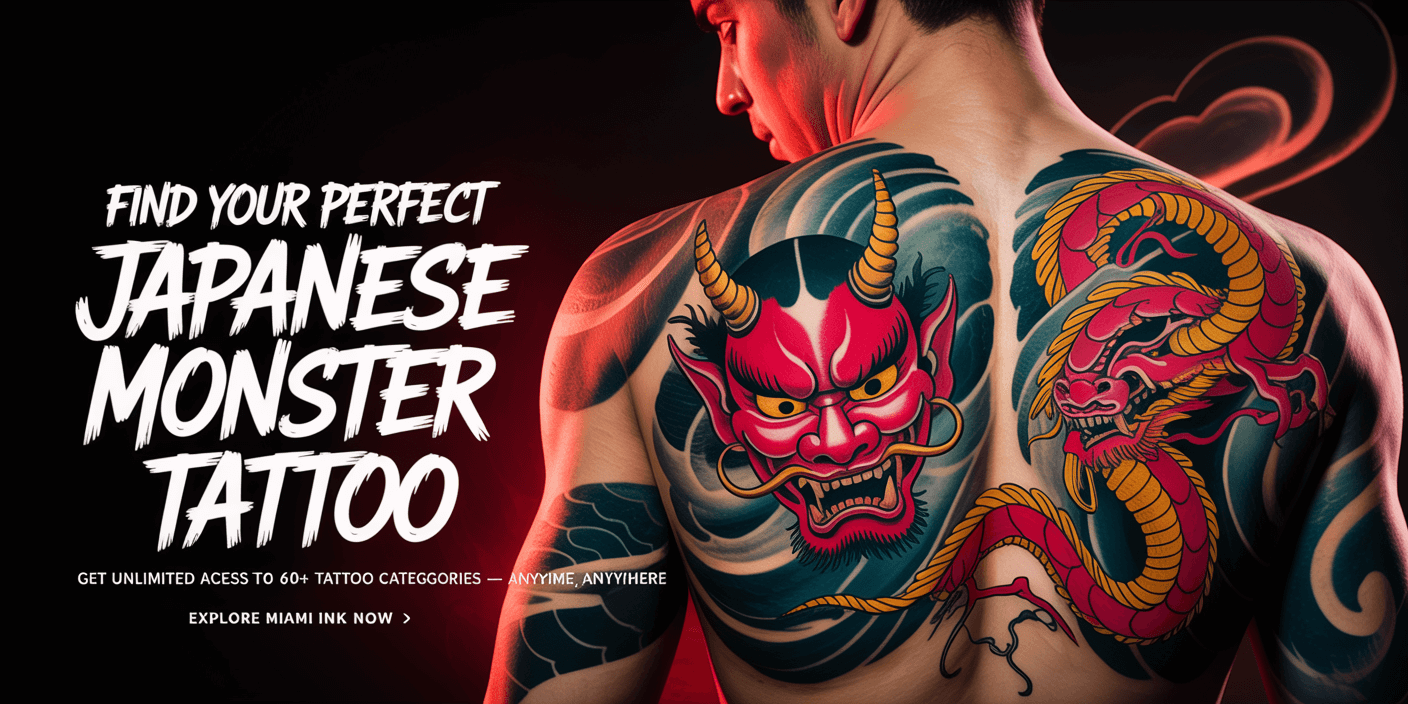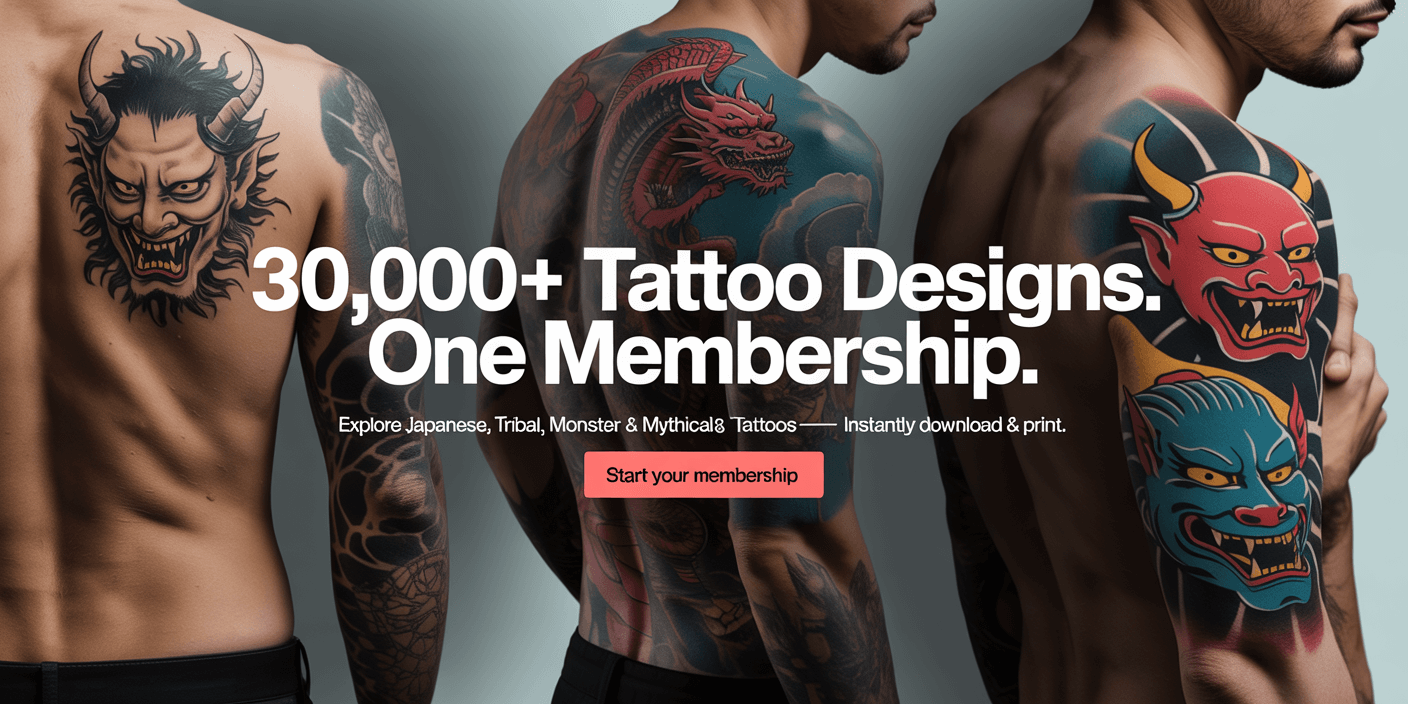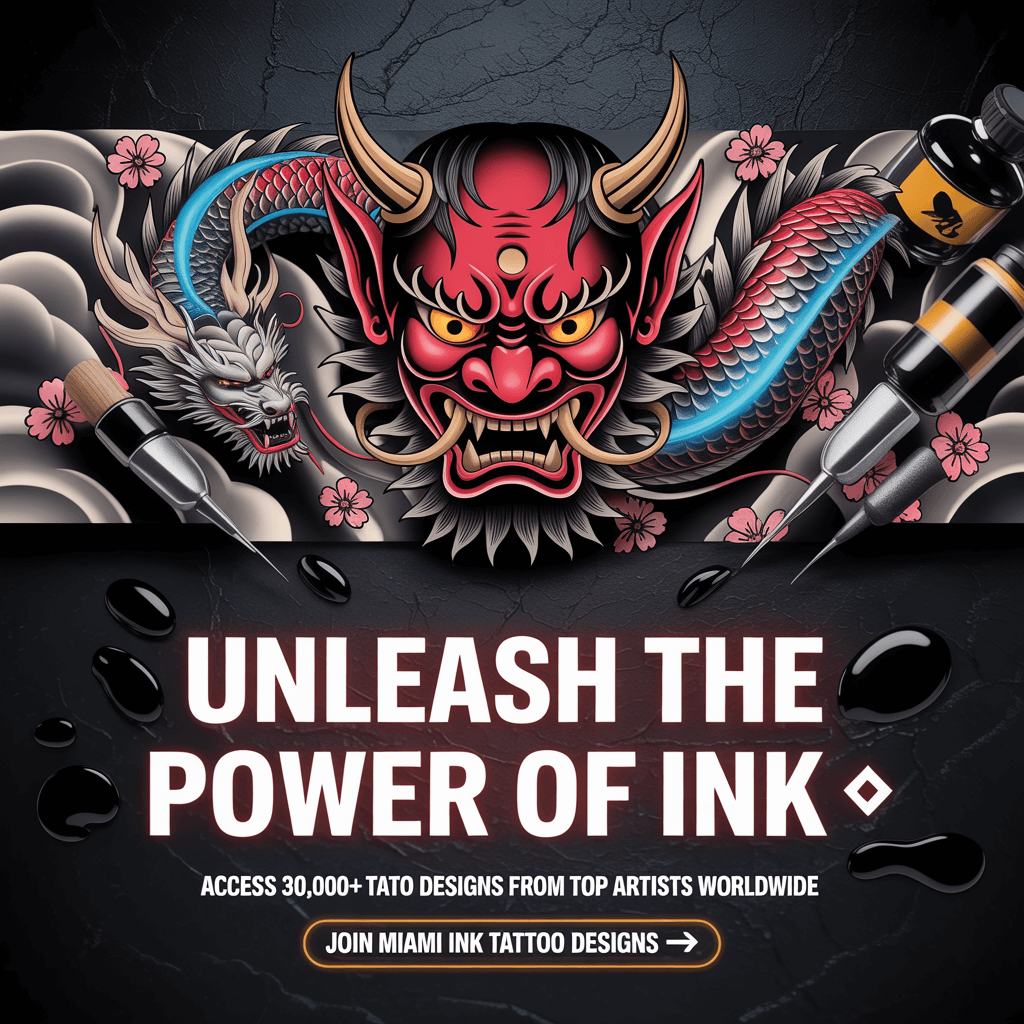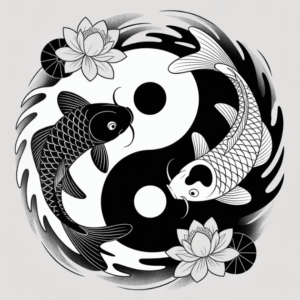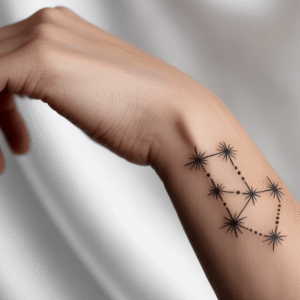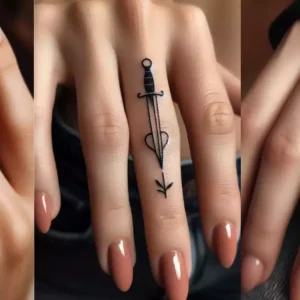Have you seen those amazing mythical creature tattoos? Ever thought about the stories behind these intricate designs? Japanese folklore is full of monster tattoo designs. They mean different things, like protection and spiritual growth.
Folklore-inspired tattoos often show Oni and Dragons. These creatures stand for different qualities. Knowing their cultural meaning helps us see the beauty and meaning in these tattoos.
Key Takeaways
- Explore the cultural significance of Japanese monster tattoo designs
- Discover the symbolism behind Oni and Dragons in Japanese folklore
- Learn about the various mythical creatures commonly depicted in these tattoos
- Understand the appeal of folklore-inspired tattoos among enthusiasts
- Gain insight into the art and symbolism of Japanese monster tattoos
The Rich Heritage of Japanese Monster Tattoos
Exploring Japanese monster tattoos uncovers a world of folklore, art, and symbols. These tattoos stem from ancient tales and mythical beings deeply rooted in Japanese culture. They have been around for centuries.
Origins in Japanese Folklore and Art
Japanese monster tattoos, like Oni and Tengu, come from the country’s rich folklore and art. Japanese folklore art is filled with stories of supernatural beings. These creatures symbolize human nature, virtues, and vices.
Tattooing in Japan has a long history, dating back to the Jomon period (around 14,000 to 300 BCE). But it was during the Edo period (1603-1868) that tattooing became widespread. It then took on the traits we see in traditional Japanese tattoos today.
Evolution of Monster Imagery in Tattooing
Monster imagery in Japanese tattoo art has evolved. This change was influenced by cultural and artistic factors. The introduction of Buddhism and Chinese culture added creatures like dragons to Japanese folklore. Traditional Japanese tattoo designs now feature these creatures, showing the artist’s skill and the wearer’s bravery or spiritual goals.
The evolution of monster tattoos also shows shifts in societal views of these creatures. For example, demon tattoos, like those of Oni, are now popular. They symbolize protection, strength, or the ability to overcome challenges.
Japanese Monster Tattoo Designs: Oni, Dragons and Other Mythical Beasts
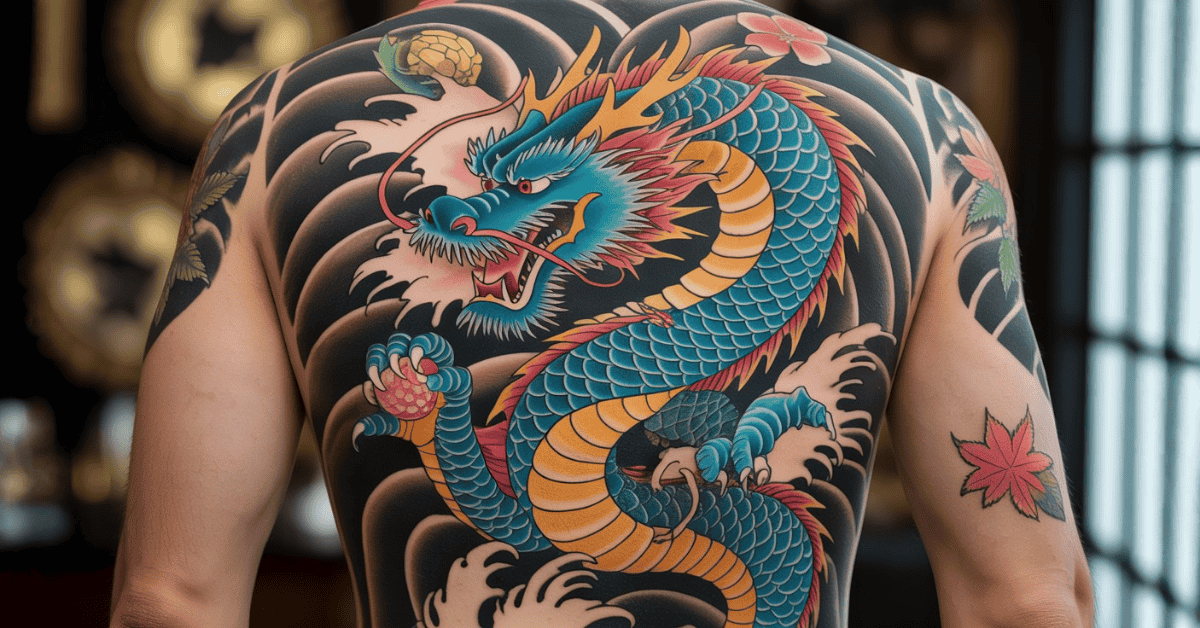
Japanese monster tattoos feature a wide range of creatures from folklore and mythology. These designs are not just eye-catching. They also hold deep cultural meaning.
Overview of Major Monster Categories
Japanese monster tattoos fall into several main categories. Oni, depicted as red or blue ogres, are seen as evil spirits. They punish the wicked. Dragons, or “Ryū,” are admired for their wisdom, strength, and kindness.
Other creatures like Kitsune (fox spirits) and Kappa (water creatures) are also common in Japanese tattoo art.
| Creature | Description | Symbolism |
|---|---|---|
| Oni | Ogres with sharp horns | Punishment, protection |
| Dragons (Ryū) | Serpent-like, benevolent | Wisdom, strength |
| Kitsune | Fox spirits, intelligent and magical | Cunning, fertility |
Significance in Japanese Visual Culture
These mythical creatures have been a big part of Japanese visual culture for centuries. They appear in art, literature, and film. They are used to teach moral lessons or symbolize human qualities.
In tattoo art, they are loved for their beauty and deep symbolism.
“The dragon is a symbol of power and good fortune, embodying the harmony of heaven and earth.” –
Traditional Japanese Proverb
Symbolism and Spiritual Meanings
The symbolism of Japanese monster tattoos is rich and varied. Oni tattoos are seen as protective charms against evil. Dragon tattoos represent strength, courage, and good luck.
These tattoos not only connect you to Japanese culture. They also express your identity and values.
By understanding the symbolism and spiritual meanings, you can pick a tattoo that fits your journey and style.
Oni Tattoo Designs: Demons of Japanese Folklore

Oni tattoos are not just eye-catching; they carry deep cultural meaning. Their scary yet intriguing look makes them a great choice for tattoos. Oni have sharp teeth and horns, showing they punish and protect in Japanese stories.
Characteristics and Visual Elements of Oni
Oni have red or blue skin, sharp horns, and wild hair. They carry iron claws or a magical hammer called a kanabou. This hammer shows its power to punish the bad.
Their look is not just scary; it’s full of meaning. It shows the balance between good and evil, and the results of our actions.
Symbolism and Meanings Behind Oni Tattoos
Oni tattoos mean many things, like protection and strength. They also connect us to Japanese culture. For some, they show a personal fight or change, showing strength and the power to get through hard times.
Choosing an Oni tattoo means more than picking a design. It’s about embracing a part of Japanese folklore with deep stories and meanings.
Popular Oni Tattoo Styles and Variations
Oni tattoos come in many styles, from traditional Japanese Irezumi to modern and abstract ones. You can add other Japanese creatures or symbols like cherry blossoms or waves to make your tattoo unique.
Whether you like a bright, bold Oni or a simple, black and white one, there’s a lot of room for creativity in Oni tattoo art.
Dragon Tattoo Designs in Japanese Tradition

Dragons in Japanese culture are not just fearsome creatures. They are also revered for their wisdom and benevolence. This makes them a popular subject in tattoo art. Japanese dragons, known as “Ryū” or “Tatsu,” are typically depicted as serpentine, benevolent creatures. They are associated with water and agriculture.
Key Differences Between Japanese and Chinese Dragons
Japanese and Chinese dragons share some similarities but have distinct differences. Japanese dragons are generally more slender and have three claws. Chinese dragons, on the other hand, are often depicted with five claws. Japanese dragons tend to be more serpentine in appearance. Chinese dragons are often depicted with more pronounced limbs.
| Characteristics | Japanese Dragons | Chinese Dragons |
|---|---|---|
| Claws | Typically 3 claws | Often 5 claws |
| Body Type | Serpentine | More pronounced limbs |
| Association | Water and agriculture | Imperial power and good fortune |
Symbolism and Powers of Japanese Dragons
Japanese dragons symbolize power, strength, and good fortune. They are believed to possess supernatural powers. These include the ability to control the weather and bring prosperity. In tattoo art, they represent the wearer’s aspirations for strength and resilience.
Design Elements and Color Symbolism
The design of Japanese dragon tattoos often incorporates vibrant colors. Each color has its own symbolism. Red signifies energy and vitality. Blue represents tranquillity and wisdom. These colors, along with intricate linework and shading, create visually striking designs.
In conclusion, Japanese dragon tattoos showcase Japan’s rich cultural heritage and artistic expression. Understanding their symbolism, design elements, and cultural context reveals their depth and beauty in tattoo art.
Other Mythical Beasts in Japanese Tattoo Art
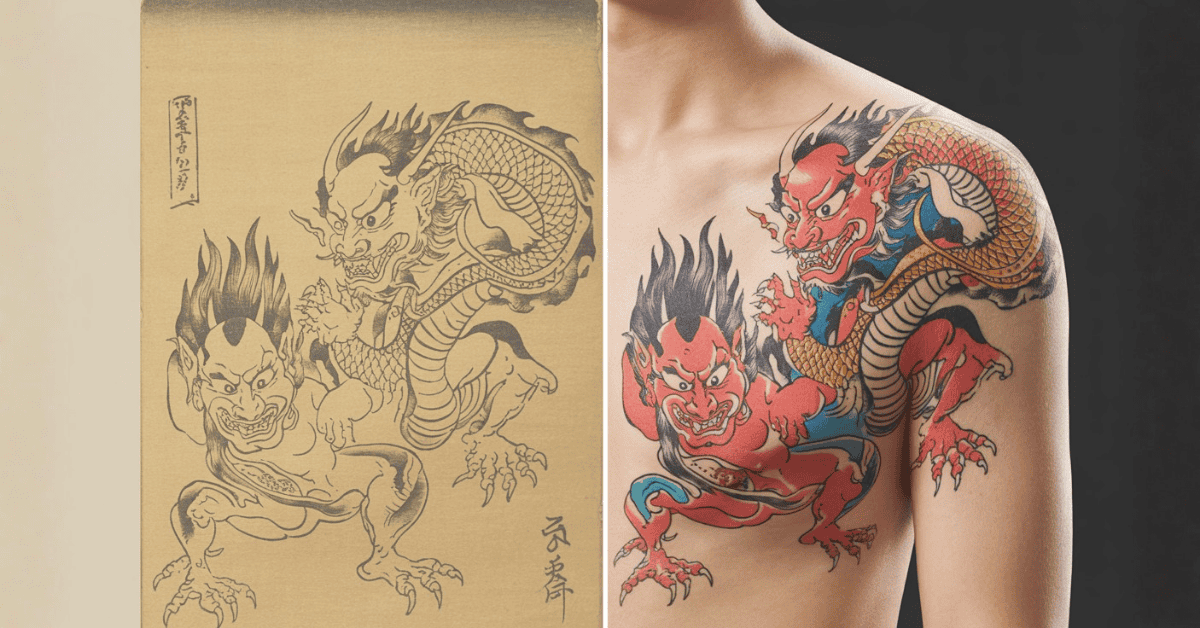
Japanese tattoos go beyond Oni and dragons. They explore a world of mythical creatures. Each creature has its own story and meaning in tattoo art. These designs add variety and carry deep cultural significance.
Kitsune (Fox Spirits) Designs and Meanings
Kitsune, or fox spirits, are known for their smarts, magic, and beauty. In tattoos, they show up with multiple tails, showing their power and wisdom. They stand for fertility, wealth, and balance between good and evil.
Kitsune tattoos are loved for their mystic and elegant look. Designs can be realistic or stylized, often with cherry blossoms or Japanese motifs.
Kappa and Water Creatures
Kappa are water spirits with a beak and a turtle shell. They live in rivers and ponds, bringing danger and fertility. Kappa tattoos connect us to water and nature.
- They symbolize life and death cycles
- They show the power of nature
- They are often shown in playful or scary poses
Tengu and Winged Beings
Tengu are creatures with human and bird traits, known for strength and martial arts. They have wings, linking them to the sky and their roles as guardians or messengers.
“Tengu embody the spirit of the mountains and the sky, representing courage and the pursuit of excellence.”
Yokai and Lesser-Known Monsters
Yokai are supernatural beings in Japanese folklore, including Kappa and Tengu. They range from evil spirits to kind ones, each with unique stories and traits. Yokai tattoos let people connect with these diverse beings.
| Creature | Symbolism | Common Design Elements |
|---|---|---|
| Kitsune | Wisdom, Fertility | Multiple tails, Cherry blossoms |
| Kappa | Water, Nature’s power | Beak-like mouth, Turtle shell |
| Tengu | Courage, Strength | Wings, Martial arts gear |
These mythical creatures add depth to Japanese tattoo art. They offer a wide range of designs and meanings. Whether you’re drawn to Kitsune’s mystic charm or Kappa’s playful danger, Japanese mythology offers endless inspiration.
Traditional vs. Modern Japanese Monster Tattoo Styles
Exploring Japanese monster tattoos reveals a mix of old and new styles. Traditional Irezumi has been a key part of Japanese tattoo art for centuries. Modern styles, on the other hand, blend new techniques with old, creating unique fusion pieces.
Irezumi: The Traditional Approach
Irezumi, or “inserting ink,” is the traditional Japanese tattooing method. It’s known for bold black outlines, vibrant colors, and detailed designs. These tattoos often feature mythical creatures like dragons and Oni.
These tattoos are more than just art; they hold deep symbolic meanings. For example, an Oni tattoo might ward off evil spirits. A dragon tattoo could symbolize strength and good luck.
Key elements of Irezumi include:
- Bold black outlines that define the tattoo’s shape and form
- Vibrant colors that add depth and symbolism
- Intricate designs that tell stories or convey messages
Contemporary Interpretations and Fusion Styles
Today, tattoo artists are exploring new ways to create Japanese monster tattoos. They mix traditional techniques with modern styles, making each piece unique. For instance, some artists combine traditional Japanese images with abstract patterns or cultural influences.
“The fusion of traditional and modern styles allows for a fresh perspective on classic designs, making Japanese monster tattoos more versatile and personal.”
Artistic Techniques and Color Palettes
The techniques used in Japanese monster tattoos have changed over time. Traditional Irezumi employs hand-poking or hand-tapping techniques to achieve its unique texture. Modern tattooing often uses machines for more detailed work.
The colors used in these tattoos are also interesting. They range from bright reds and oranges to deep blacks and blues. Each color has its own symbolic meaning.
A trend in modern Japanese monster tattoos is the use of subtle colour gradations and shading. This creates a 3D effect, making the tattoo stand out more.
Finding the Right Artist for Japanese Monster Tattoos
Japanese monster tattoos need a skilled artist to come to life. They have a rich culture and detailed designs. It’s important to find an artist who knows Japanese tattooing well.
Qualities to Look for in a Tattoo Artist
When looking for a tattoo artist, consider a few things. Experience in Japanese tattoos is key. It shows they understand the culture and symbols. Look for a portfolio that shows their skill in this style.
Attention to detail is also important. Japanese monster tattoos have complex designs and patterns. This skill is crucial for a great tattoo.
| Quality | Description | Importance Level |
|---|---|---|
| Experience in Japanese Tattooing | Understanding of cultural and symbolic elements | High |
| Attention to Detail | Ability to create intricate designs | High |
| Communication Skills | Ability to understand and interpret your design ideas | Medium |
Researching Artists Specializing in Japanese Style
Research is crucial to finding the right artist. Look at online portfolios and read reviews. Ask friends or tattoo fans for recommendations.
Also, check out tattoo conventions or visit studios. This helps you see an artist’s style and skill.
Consultation and Design Process
After finding a potential artist, the consultation is key. It’s your chance to talk about your design ideas. A good artist will listen, give feedback, and create a design just for you.
Make sure to ask about their design process. How do they turn your ideas into a tattoo?
Placement and Design Considerations
When designing a Japanese monster tattoo, placement and design are key. They affect both how the tattoo looks and its meaning. The right placement can make your tattoo stand out and carry a deeper meaning.
Body Placement Traditions and Meanings
In Japanese tattoo culture, where you put your tattoo matters. It’s not just about looks. Different parts of the body have their own meanings. For example, tattoos on the back show strength and protection.
Tattoos on the arms might mean courage or success. Knowing these traditions helps you pick a spot that matches your tattoo’s message.
Size and Scale Considerations
The size of your tattoo is also important. Big tattoos can show lots of detail and complexity. They let you show off mythical creatures in all their glory.
But small tattoos can pack a big punch if designed well. Think about what you like, how much detail you want, and how size affects your tattoo’s look.
Combining Multiple Mythical Creatures
Putting different mythical creatures together in one tattoo is unique. For instance, mixing an Oni with a dragon or adding Kitsune elements adds depth. When you mix creatures, think about how their meanings work together.
Also, consider how to make them look good together. This way, your tattoo will be both meaningful and visually appealing.
🎨 Explore the Ultimate Tattoo Design Vault
Looking for that perfect Japanese monster tattoo that blends power, artistry, and ancient symbolism?
Unlock inspiration inside the world’s #1 tattoo design library — Miami Ink Tattoo Designs.
🔥 What You’ll Get Inside:
- 💀 Access to 30,000+ professional tattoo designs from top artists worldwide
- 🐉 60+ design categories, including Japanese, Tribal, Monster, Dragon, and Mythical Creatures
- ✒️ 165 exclusive tattoo fonts for unique lettering and kanji artistry
- 🎥 Hours of tattoo videos — from design inspiration to real artist sessions
- 📚 Rare tattoo library PDFs like Tattoo Bible Vol.1 & 2 and Dragon Fever
- 🌐 24/7 access on any device — browse, pin, and download your favorites anytime
- 💸 Save 60% with the monthly membership — cancel anytime, risk-free
👉 Ready to Discover Your Next Ink Masterpiece?
🎯 Join Miami Ink Tattoo Designs Today and explore thousands of exclusive tattoo inspirations trusted by over 45,000 members worldwide.
Conclusion
Exploring Japanese monster tattoo designs has shown you the deep cultural and symbolic meanings. These designs are not just beautiful; they hold spiritual significance. They come from Japanese folklore and art.
Each creature, like the oni and dragons, has its own special meaning. Choosing a Japanese monster tattoo means embracing Japanese culture and history. Knowing the significance of these creatures helps you choose wisely.
Japanese monster tattoos offer many creative options. Think about where, how big, and how detailed you want your tattoo. This ensures your tattoo looks great and has meaning. Start your tattoo journey with a skilled artist who respects these traditions.
FAQ
What is the cultural significance of Japanese monster tattoos?
Japanese monster tattoos are deeply rooted in the country’s folklore and art. They symbolize strength, courage, and protection. They are a big part of Japanese culture and spirituality.
What are Oni in Japanese folklore?
Oni are demons or ogres in Japanese folklore. They are often red or blue creatures with sharp horns and teeth. They are linked to punishment, protection, and good luck.
How do Japanese Dragons differ from Chinese Dragons?
Japanese Dragons, or Ryū, are slender and snake-like with three claws. Chinese Dragons have five claws and are more serpentine. Japanese Dragons are seen as symbols of good fortune and prosperity.
What is the significance of Kitsune in Japanese tattoo art?
Kitsune, or fox spirits, are mythical creatures in Japanese folklore. They are often shown with multiple tails. They symbolize intelligence, cunning, and spiritual power.
What is Irezumi, and how does it relate to Japanese monster tattoos?
Irezumi is a traditional Japanese tattooing technique. It involves hand-poking or hand-tapping ink into the skin. It’s used to create intricate designs, including Japanese monster tattoos.
How do I choose the right tattoo artist for a Japanese monster tattoo?
To find the right tattoo artist, look for those who specialize in Japanese-style tattoos and have experience with monster designs. Check their portfolio and read reviews.
What are some traditional body placement meanings for Japanese monster tattoos?
In traditional Japanese tattooing, body parts have different meanings. Tattoos on the back are often for protection. Tattoos on the arms are for strength.
Can I combine multiple mythical creatures in a single tattoo design?
Yes, combining multiple mythical creatures is common in Japanese tattoo art. It allows for a unique and personalized design that shows your individuality.
What are some common design elements and color symbolism used in Japanese Dragon tattoos?
Japanese Dragon tattoos often include scales, flames, and clouds. These elements symbolize power, strength, and good fortune. Colors like red, gold, and blue are used to represent different aspects of the Dragon’s symbolism.
